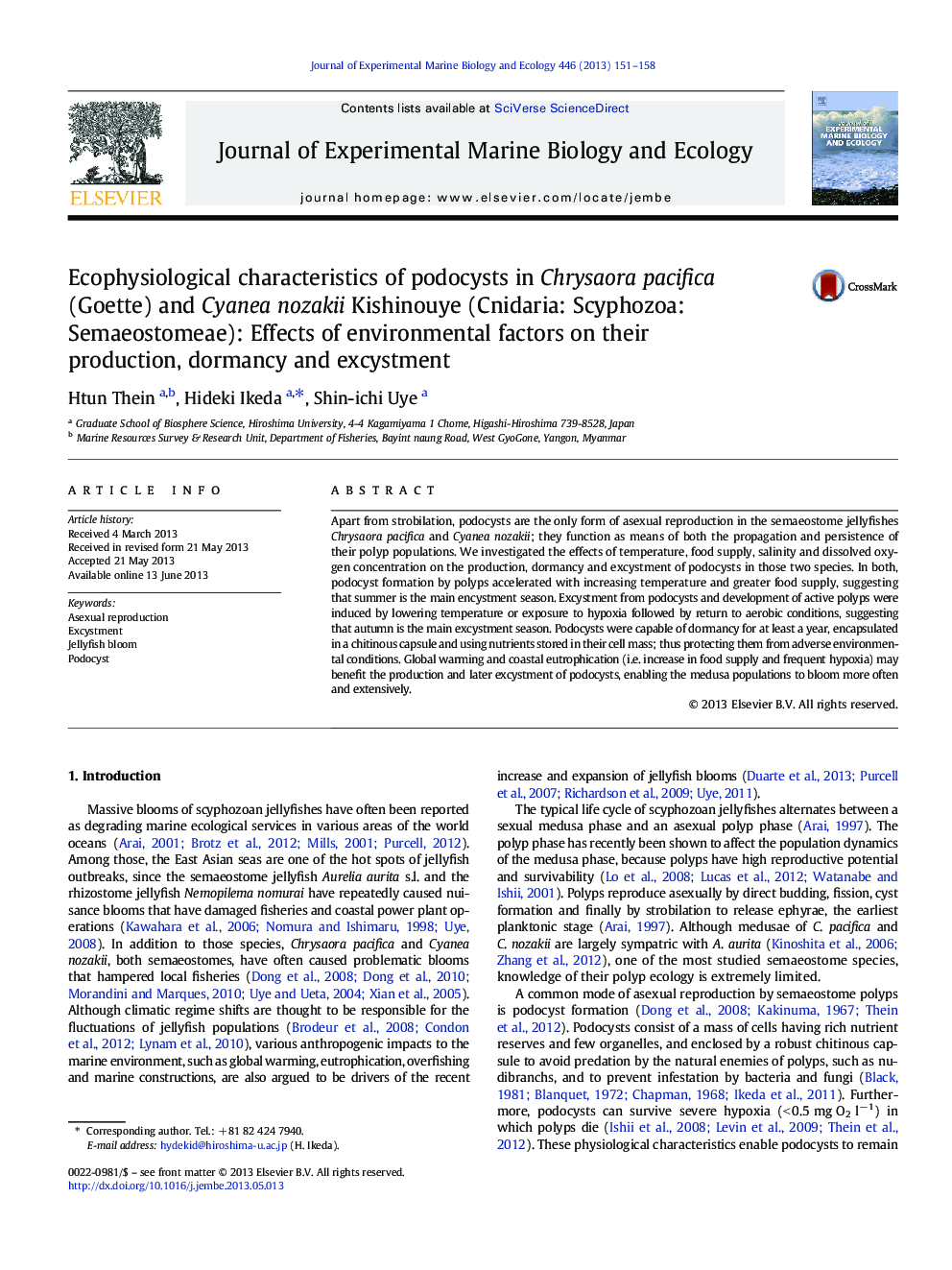| Article ID | Journal | Published Year | Pages | File Type |
|---|---|---|---|---|
| 4395717 | Journal of Experimental Marine Biology and Ecology | 2013 | 8 Pages |
•We investigated the ecophysiology of Chrysaora pacifica and Cyanea nozakii podocysts.•Morphology of their podocysts resembles each other and that of Aurelia aurita.•Their podocyst production accelerated with increasing temperature and food supply.•Excystment of their podocysts is induced by lowering temperature or by hypoxia.•Their podocysts were capable of dormancy at least for 1 year.
Apart from strobilation, podocysts are the only form of asexual reproduction in the semaeostome jellyfishes Chrysaora pacifica and Cyanea nozakii; they function as means of both the propagation and persistence of their polyp populations. We investigated the effects of temperature, food supply, salinity and dissolved oxygen concentration on the production, dormancy and excystment of podocysts in those two species. In both, podocyst formation by polyps accelerated with increasing temperature and greater food supply, suggesting that summer is the main encystment season. Excystment from podocysts and development of active polyps were induced by lowering temperature or exposure to hypoxia followed by return to aerobic conditions, suggesting that autumn is the main excystment season. Podocysts were capable of dormancy for at least a year, encapsulated in a chitinous capsule and using nutrients stored in their cell mass; thus protecting them from adverse environmental conditions. Global warming and coastal eutrophication (i.e. increase in food supply and frequent hypoxia) may benefit the production and later excystment of podocysts, enabling the medusa populations to bloom more often and extensively.
